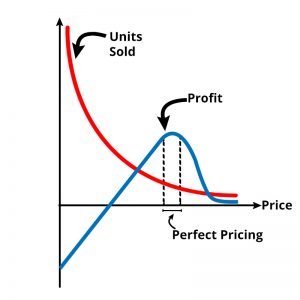
When it comes to retail, pricing is one of the most important decisions (if not THE most important decision). And it has become way more important with the rise of e-tail marketplaces like Amazon, Flipkart and others. While these platforms have expanded potential customer reach for sellers multiple times, they have also significantly increased competition in e-tail. As a result, pricing decision has further gained importance. It is very crucial for you as a seller to price your products right. If you price them too high, you lose valuable sales and if you price too low, despite gaining significant sales, you may end up with very less profits.
In this article, we will be discussing 4 crucial aspects of product pricing and will try to understand what factors you need to take into account while you are pricing your products.
1. Cost Based Pricing – Floor Price – Deciding the Lower Bar of Product Price
Take into account all the costs that you incur in the process of fulfilling an online order. It can include various costs the following:
- Manufacturing/Procurement Price
Suppose you are a manufacturer, there must be various costs involved in manufacturing of the products. Similarly, if you are a reseller, you should take note of the costs that are incurred during the procurement of the products including the transportation charges. - Inventory/Storage Cost
You must be storing your products somewhere – your own warehouse (in case you have opted for MFN/Self-shipping) or Marketplace’s warehouse (e.g. FBA in case of Amazon) or maybe both. you need to make sure that these costs are taken into consideration as well. - Packaging Cost
What packaging material and the method you choose for your products not only affect the safety of your products during shipment but is also one of the important aspects of your product pricing. Whether you have a set-up for product packaging at your own place or it is to be taken care of by the marketplace, both ways, will incur some costs and accordingly, you should be considering this dimension while pricing your products. - Handling and Shipping Costs
Handling costs are incurred when the products are moved from storage and prepared for delivery to the customer. Your handling costs will be largely determined by the amount of resources you have allocated for fulfilling orders. Along with that, shipping costs also form a major component of the pricing decision. - Marketplace Commission and other costs
Marketplaces charge you a certain amount on every unit that you sell. These costs usually have a fixed as well as a variable component. The charges will depend on the category of product as well as the price band in which the items will be listed. The commission that you pay should be taken into consideration while pricing your products. This aspect can be a little tricky due to its cyclic nature – the price of your product will dictate your marketplace expense and this expense should be part of your product price.

While it may sound basic, but in our experience with more than 15000 e-commerce businesses, we know clearly that many sellers today are not paying enough attention to this. And, as a result, they either end up with an overpriced product with little/zero sales or an under-priced product having great sales but little to no profits. The complicated cost structure of marketplaces like Amazon and Flipkart where the cost depends on several variables makes it all the more difficult for sellers to keep a tab on this. Our estimator/calculator can help calculate relevant costs for your product and accordingly, help you calculate a price for a target profit margin.
Facing difficulty in pricing your products? Reach out to our Pricing Experts!
2. Market based pricing – Ceiling Price – Price competitiveness – Deciding the Upper Bar of Product Price
Another critical aspect of pricing decision is understanding the current price range of similar items in the marketplace. A simple thumb rule to follow: Go to Amazon marketplace and search for some important search terms relevant to your products and study the search results on page 1. Analyse their pricing and their performance in terms of sales rank, search result rank, no. of reviews, etc. This can give you a peek into what pricing band your competitors are using to sell the same or similar products on the platform. If you are on Amazon, you can also go for “Automate Pricing” tool to match the prices of your competitors.
3. Dynamic Nature of Pricing
Contrary to popular belief among the sellers, pricing is not a one time decision. As we had discussed in our article titled “How to increase sales on Amazon?”. It is not something that you can decide once and stick with it forever. It is a dynamic decision. It will depend on the stage of the product lifecycle. If your products are new in the market, you need to have a very low-profit margin. Once you start to gain popularity and traffic, then you can go ahead and increase your margin.
Other than that, you should also vary your price depending on your competitor’s offer price to make sure you stay ahead of the competition. This does not mean you should be blindly following your competitor’s price. You should rather keep looking at their prices and taking a call whether you need to revise your prices.
You should also vary your prices keeping in view of the seasonal or festive discounts. Usually the traffic on marketplaces is high during the festive seasons and by lowering your price by offering discounts you can hit the sweet spot of sales and profit balance where you will be getting enough sales as well making good enough profits.
4. Look at the profits per month/quarter/year rather than profits per unit
What this means is that while deciding the price of your products, do not go by keeping the profits on the sales of every unit. Instead, look at the profits that you will have per month. Having a lower profit margin per unit can help you stay ahead in the competition that will eventually lead to more sales volume and thus more profits per month. But, if you are profit conscious for each unit that you sell, it may make your products be on the higher side of the pricing which can lead to less number of people buying your products. You should be strategizing your pricing in a manner that leverages the number of potential buyers that platforms like Amazon have.

So, taking all the dimensions discussed above into consideration, the ultimate conclusion is that product pricing is a very very important decision and it is all about achieving the right balance between the sales volume and profits.
What we have seen often is that sellers are reluctant in experimenting with pricing. However, we strongly suggest that you should always experiment with your product prices. When you are not experimenting, you are losing very high potential sales. As a business you cannot afford to play safe with your product pricing. It’s time for you to start looking at the pricing strategy as an experiment. Happy Selling!
Are you a seller struggling with the pricing decisions? Or perhaps you have been experimenting with your product prices over the last few years. In any case, we would love to hear from you. Do not hesitate to get in touch with our pricing specialists.
